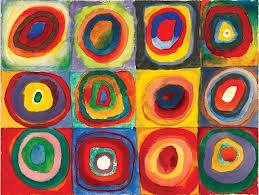Check it out on WORDCAT...
Part I: Bibliographic information
Title: National Treasure
Writer: Jim Kouf, Cormac Wibberley (screenplay)
Director: Jon Turteltaub
Producer: Jerry Bruckheimer
Copyright Date: 2004
Studio: Walt Disney
Type: Movie
Format: Film, DVD
Genre: Mystery/adventure
Reading Level/Interest Age:
Actors: Nicholas Cage (Benjamin Gates), Riley Poole (Justin Bartha), Abigail Chase (Diane Kruger), Jon Voight (Patrick Henry Gates), Harvey Keitel (Sadusky).
Rated: PG
Run Time: 131 minutes
ASIN: B00005JN5E
Part I: Plot Summary, Critical Evaluation, Reader’s Annotation
Reader’s Annotation -- Modern-day treasure hunter Ben Gates is close to finding the key to unlocking a series of clues that lead to a war chest hidden by the Founding Fathers. He and his small team outsmart a criminal syndicate who are close on their tail to beat them to the elusive find.
Plot Summary -- The movie begins with a boy being told a story by his grandfather about the Mason’s and a conspiracy to keep an ancient secret. As the boy grows up, he becomes a treasure hunter with the hope to find the elusive national treasure that his forefathers sought unsuccessfully. This begins with the theft of the Declaration of Independence. But it’s complicated by a syndicate of criminals who have the same objective. And, they prove to be difficult adversaries. This is not to mention that Gates gets caught by the FBI but manages to escape during a sting operation to get the document back. It contains some key views on the back side -- and once they crack it they are able to get close to the treasure, which is hidden in an old church on Manhattan. The plot is quite innocent save some gunfire by the bad guys and nearly losing the stolen document a number of times in the process of a treasure hunt.
Critical Evaluation -- This film is technically not a teen film but the appeal is strong to a younger group due mainly to its being produced by Disney. Additionally, there is a younger character who plays Gates helper. The use of technologies to solve the mystery is also engaging to a younger audience. The story is essentially a mystery but there is also a romantic element involving Gates and Kruger, the federal employee who was charged with protecting the National Archives. There is also a subcontext of Gate’s relationship with his father who disapproves of his spending his life chasing clues -- though his father did the same in his time. The plot gets a push by the existence of some bad guys who also want to solve the mystery -- and they show up close behind Gates and his two helpers almost inevitably. While the film fairly predictable in this respect, this gives the film the excitement that’s pretty much required to keep the teen audience. This historical aspects are rather simplified but make the storyline more intriguing than it would otherwise be. Set in Washington, we see some of the nation’s national landmarks as the backdrop.
Part III: Author Info
Jim Kouf is a long-time Hollywood writer, director and producer. He was born in 1951 in Hollywood, California. In addition to scripting the National Treasure series, his credits include the Angel series (2000-2001) and Ghost Whisperer (2006-2007). More recently he has been the co-creator for the hugely popular TV series Grimm, which is currently in its third season.
Cormac Wibberley is a screenwriter known to often work with his fellow screenwriter and wife. His credits include I Spy (2002) and Bad Boys II (2003). He also co-wrote the National Treasure: Secret of Books (2007), the second in the movie series.
Part IV: Curriculum Ties, Diversity, Booktalk Ideas, Challenge Issues
Curriculum Ties, if any -- This story is based on historical fiction and so its value in teaching is limited to the sights and documents they encounter -- in addition to the techniques used on documents. There is enough of this sort of thing to interest a history class that might be studying the importance of first-hand documentation and preservation.
Diversity of Cultures -- Not much in this arena as far as this movie goes.
Booktalking Ideas -- The Declaration of Independence is important to this film as it holds clues to finding a massive national treasure Are there examples in history of incidents when war has lead to loss of important documents and treasures of national significance? What are some of them? What lessons are there in how we keep these items safe?
Challenge Issues -- Not much here except perhaps the discussions about the conspiracy of the freemasons perhaps being far fetch and not accurate historically.
Part V: Reasons chosen
This series is reminiscent of the Indiana Jones films where there was also an independently minded scholar who seeks treasures from times past. It’s pumped up with Hollywood effects but still holds its own as a story with some intrigue and thoughtfulness. Teens will identify with the young aide who does the technical planning for the investigations. It’s Disney produced and feels a bit innocent on today’s standards but offers an alternative to wanton violence often found in action/adventure films these days.
Part VI: Citations
National Treasure. (2004). IMDb. Retrieved from http://www.imdb.com/title/tt0368891/?ref_=fn_al_tt_1
Jim Kouf. (2012). IMDb. Retrieved from http://www.imdb.com/media/rm3308490240/nm0467942


No comments:
Post a Comment